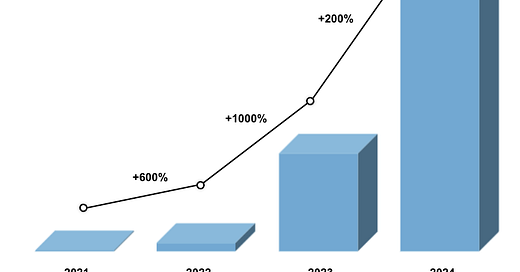Deep: How are companies using Machine Learning?
Examples from top tier tech products including YouTube, Reddit, Uber, Airbnb Microsoft, Google, Snapchat and more.
🔒DoP Deep goes deeper into the concepts and ideas that are covered in the Weekly Briefing to help you learn lessons from the experiences of top tech companies. If you’d like to upgrade to receive these in-depth pieces of analysis you can upgrade below. New reports added every month.
Hi product people 👋,
In last week's briefing, I mentioned that YouTube is starting to roll out a new proprietary age verification system that uses machine learning to help it estimate a user's age and show only age-appropriate content.
It’s a smart example of how machine learning can be used by product teams to dynamically change the UX of a product depending on the user - and keep children safe at the same time. And in this Deep dive, we’ll take things a step further by exploring how other top tech companies are using machine learning to power features from UX enhancements through to predictive analytics and security improvements.
While we’ve recently looked at new AI features together, this deep dive report is focused exclusively on ML-powered features only - and since it’s been over 7 months since the last time we did this, there’s plenty for us to catch up on. We’ll take a look at how ML is powering new features at top companies like Snapchat, Uber, Airbnb and more. And - for the first time - how some companies are using ML to cut costs and unlock new revenue generating opportunities, too.
If you’re currently working on your product’s AI strategy and you’re interested in getting some inspiration from other top companies on how you might be able to use ML, this deep dive should help.
Coming up:
How Reddit achieved 40-50% international growth through ML-powered translation - and what opportunities this creates for product teams
Inside Airbnb's "Anti-Party" ML technology that blocked 75,000 potential party houses
The surprising way Uber transformed its ML capabilities into a new revenue stream - and what this means for the future of AI monetization
How Microsoft and YouTube are using ML to create next-gen security features - from age verification to scareware protection
How leading companies like Snapchat, Microsoft, Uber, Stripe, Spotify and others are using ML in innovative ways across UX, security, revenue generation and more.
How this analysis is structured
Machine learning application - how is ML applied to the feature? We’ve intentionally picked a wide variety of ML applications to ensure this deep dive is as thorough and varied as possible to ensure you get a varied sample of how companies are using ML
How it works - a description of how the ML product feature works
Industry - including B2B, B2C, SaaS, social, finance, ecommerce, advertising, fashion and others
Link - a specific link to each of the features to help you learn more about it
How each ML feature is categorized
To make it easier to navigate, for each ML feature included, this is categorized with the following attributes:
UX Enhancements - Machine learning applications that improve user experience through better interfaces, interactions, or accessibility. Reddit demonstrates this well with their ML-powered translation system that can translate their entire content corpus into multiple languages, driving over 40% of their growth.
Predictive Analytics - the use of machine learning to analyze current and historical data to make predictions about future outcomes. Google Weather's GenCast, developed by DeepMind, is a fine example of this by achieving 99.8% accuracy in weather forecasting using historical weather data from 1979 to 2018.
Recommendation Systems - ML algorithms that suggest relevant items or content to users based on their preferences and behavior. Snapchat's new proprietary ML platform, Bento, is an example of this.
Security Enhancement - Machine learning applications focused on identifying and preventing security threats or fraudulent activities.
Anomaly Detection - A type of machine learning that identifies unusual patterns or data points that deviate significantly from the expected behavior. We’ll take a look at some examples.
Cost Reduction / Revenue Generation - Machine learning can be used to reduce costs and potentially generate more revenues, too. GoDaddy demonstrates this through their use of ML for media mix modeling, helping determine optimal marketing spend across different channels. We’ll explore how Uber and Amazon are doing this to generate brand new revenue streams.




